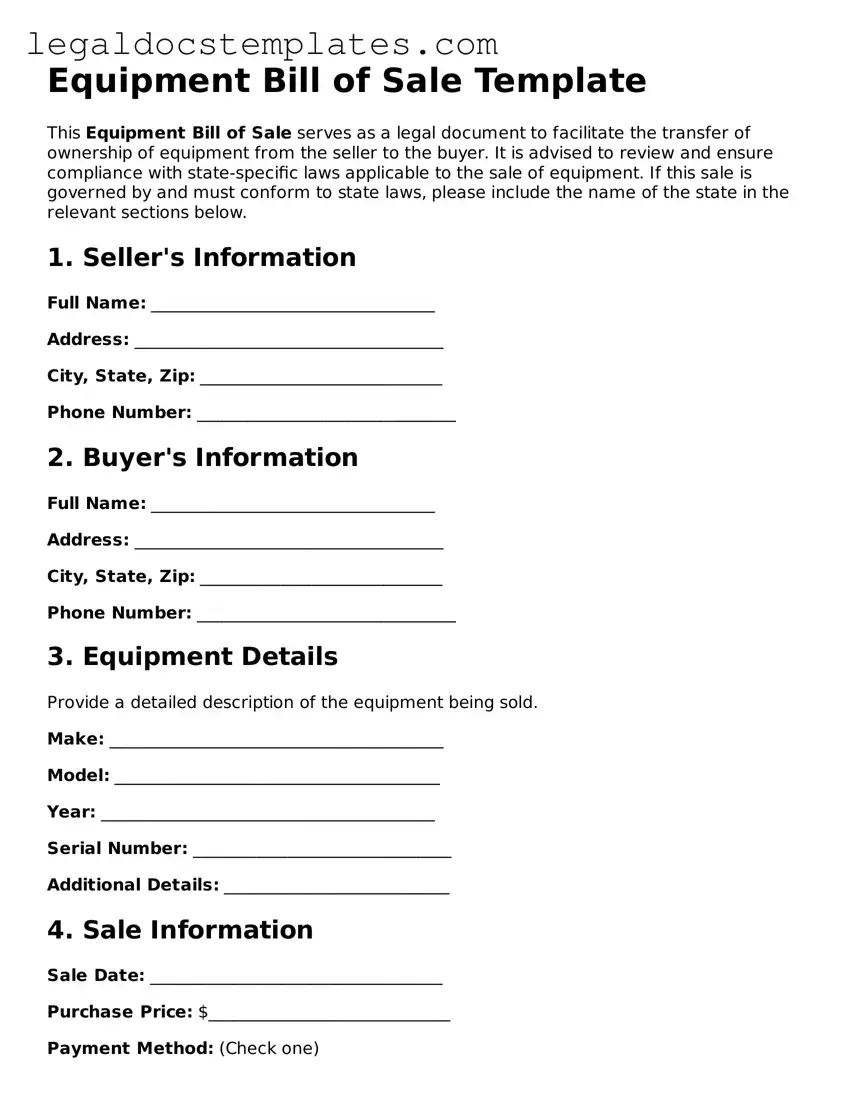Equipment Bill of Sale Template
This Equipment Bill of Sale serves as a legal document to facilitate the transfer of ownership of equipment from the seller to the buyer. It is advised to review and ensure compliance with state-specific laws applicable to the sale of equipment. If this sale is governed by and must conform to state laws, please include the name of the state in the relevant sections below.
1. Seller's Information
Full Name: __________________________________
Address: _____________________________________
City, State, Zip: _____________________________
Phone Number: _______________________________
2. Buyer's Information
Full Name: __________________________________
Address: _____________________________________
City, State, Zip: _____________________________
Phone Number: _______________________________
3. Equipment Details
Provide a detailed description of the equipment being sold.
Make: ________________________________________
Model: _______________________________________
Year: ________________________________________
Serial Number: _______________________________
Additional Details: ___________________________
4. Sale Information
Sale Date: ___________________________________
Purchase Price: $_____________________________
Payment Method: (Check one)
- Cash
- Check
- Money Order
- Other: ____________________________________
5. Agreement
The Seller warrants they are the legal owner of the equipment and that the equipment is being sold free of any liens or encumbrances. The Buyer accepts the equipment in its current condition, "as is", with all faults, whether known or unknown. Both parties acknowledge that they have read, understood, and agreed to the terms as stated in this Equipment Bill of Sale.
6. Signatures
Seller's Signature: ___________________________ Date: ______________
Buyer's Signature: ____________________________ Date: ______________
7. Witness (if applicable)
Witness's Signature: __________________________ Date: ______________
Print Name: __________________________________
